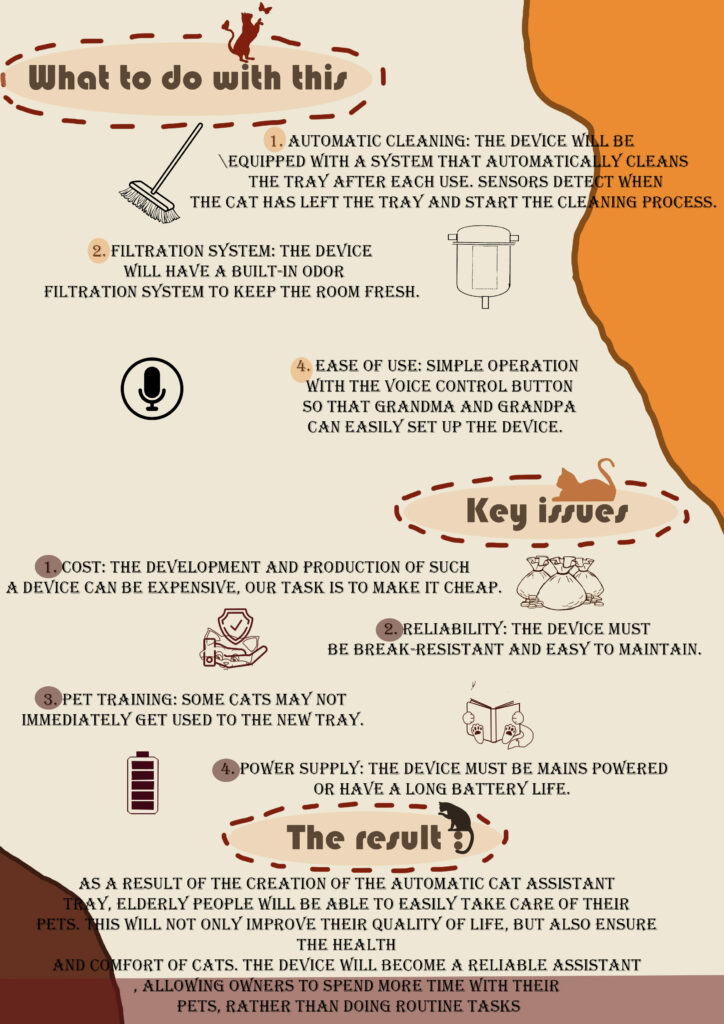
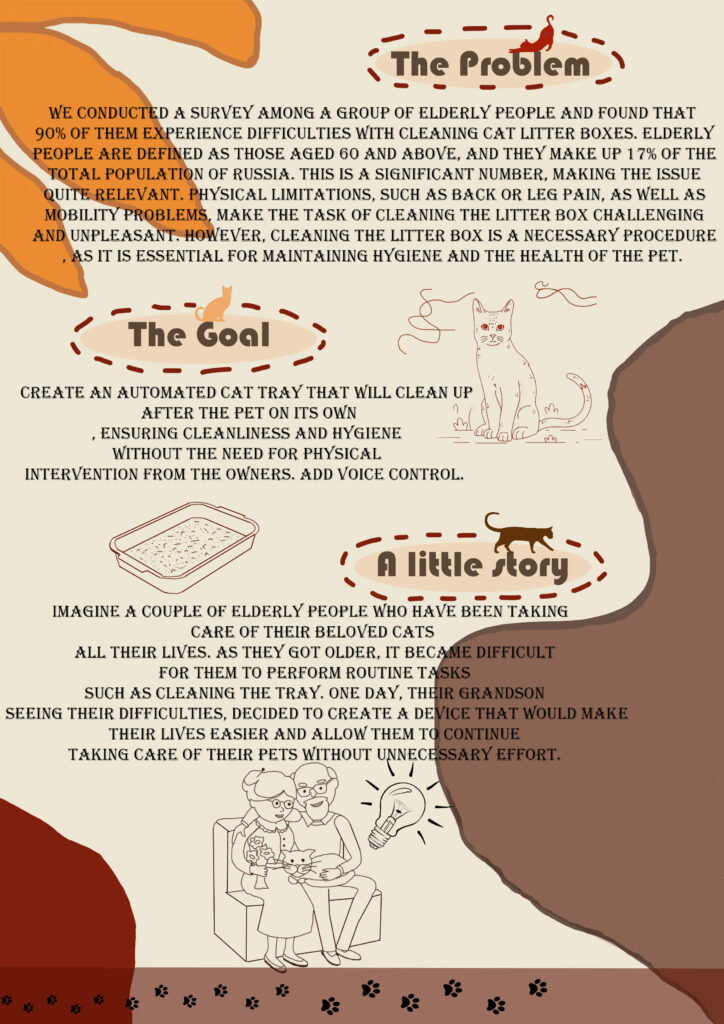
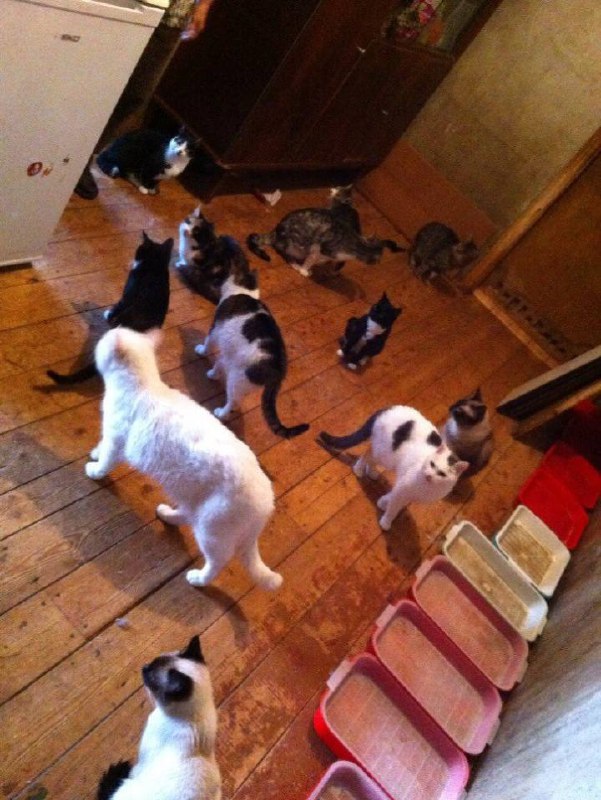
the exact picture as it usually happens:
—————————————————————————————————————————————————————————
Our grandparents all live in Moscow They put cat trays either in the bathroom or in the kitchen mostly. It should be cleaned 1-2 times a week. The tray itself costs about $15. And the filler itself costs $ 10 and lasts for a month. These are the lowest prices, everything else is more expensive. Keep in mind that salaries in Russia are small, especially for the elderly, who have a very small pension.
The pension of our ancestors is about $ 100, respectively, cats are expensive for them, but they love them very much.
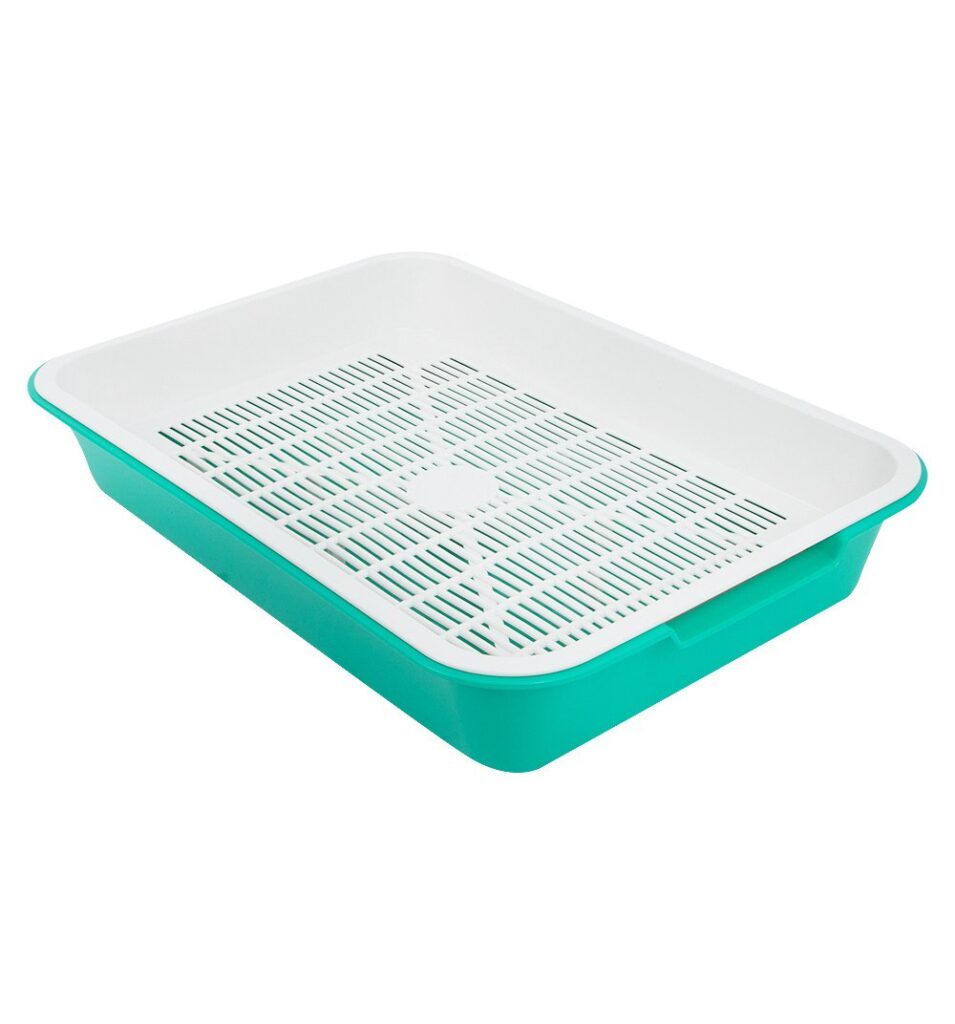
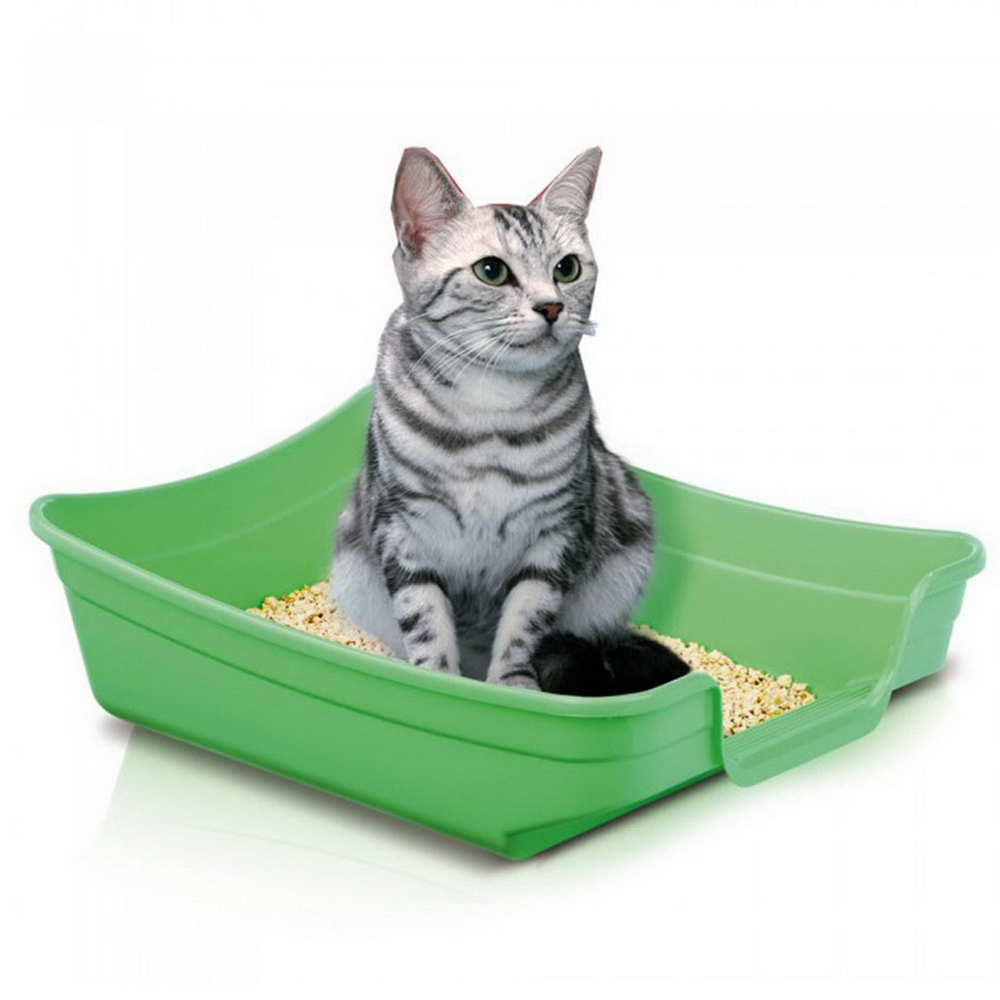

Thank you Team 15 (Yurii), for sharing your Client Project Brief. In what countries are your grandparents located?
Can you share images of the cat trays your grandparents use?
Where do they position these cat trays?
How often do they need to clean them?
How much have your grandparents paid for the cat trays?
What cat trays are available in your country? Can you please provide analysis of the current cat trays’ benefits and limitations?
Thank you, Erik
Good afternoon! We understand you, we will add information, thank you!
Our main idea is to have a product that is different from the products on the market, easy to clean and does not require the elderly to bend down to clean.
Do you have any style requirements?
Hello Team 15, who is your user(s)?
Is the photo you have shared with the cats from one of your users’ flat/house?
Erik
Hello Team 15, can you please share photos of the bathrooms and the kitchen where these trays are located?
Also, can you provide photos of the existing trays?
Erik
The following is a design concept for an automated cat litter tray, an elderly-friendly product with voice and air purification features:
I. Core Design Objectives
Convenience Aiming at the characteristics of the elderly’s mobility and bending difficulties, the design of the cleaning mechanism that does not require bending to operate. For example, the cat can enter and exit through the entrance of suitable height, while the internal cleaning mechanism can automatically screen and collect the clumped cat litter into the hidden litter bag or litter collection box, and these operations can be easily completed in the standing state through buttons and voice commands.
Health & Comfort Air Purification Function: Cat litter trays can produce odours during use, especially for elderly people with a sensitive sense of smell. The built-in efficient air purification system can adsorb and decompose the odour molecules in time, such as the use of activated carbon filters, photocatalysts and other technologies, to keep the air around the cat litter box fresh and reduce the impact of odour on the living environment of the elderly.
Hygiene protection: the automatic cleaning function not only reduces the burden of the elderly, but also ensures that the cat litter tray is always in a relatively clean state, reduces bacterial growth and protects the health of the elderly and pets.
Second, the function design
Voice function operation guide: The voice function can provide detailed operation guide for the elderly. For example, when the elderly use it for the first time or forget how to operate it, it can be prompted by voice, “Press the red button to start automatic cleaning” “Say ‘clean cat litter’ to start the cleaning process” and so on. It makes the operation more intuitive and easy to understand.
Status feedback: During the working process of the cat litter tray, the voice informs the elderly of the current status, such as “cleaning cat litter, please wait”, “cat litter cleaning is complete”, “the rubbish bag is full, please replace it. ” and so on, so that the elderly always understand the operation of the equipment.
Pet interaction: In addition to operation-related voice content, some interesting pet interaction voices can be designed. When the cat enters or leaves the litter box, play a soft voice or affectionate call, so that the cat can adapt to the litter box more easily, and at the same time, it can also bring a pleasant experience to the elderly.
Automatic Cleaning Function Sensing and Recognition: Advanced sensor technology is used to accurately sense the cat’s entry and exit. For example, the weight sensor is used to determine if the cat is in the litter tray, and the infrared sensor is used to monitor the cat’s activity and automatically start the clean-up process when the cat has been away for a period of time. At the same time, it is able to recognise the clumping of cat litter and ensure that clumped cat litter is completely cleaned up without accidentally cleaning up unused cat litter.
Cleaning method: The cleaning mechanism can be a rotating screen type, which separates the clumped cat litter from the clean cat litter by rotating, and the clumped cat litter falls into the collection container below; or a conveyor belt type, which transfers the cat litter to the separation area for cleaning. The cleaning process should be quiet and efficient to avoid generating too much noise to disturb the elderly.
Appearance and structural design
Height and size Considering the convenience of the elderly, the height of the litter tray should be suitable for the elderly to stand up and operate, generally around 70 – 90 cm, so that the elderly do not need to bend down to easily reach the operating buttons or put in the cat litter, etc. The overall size should not be too large. The overall size should not be too large, and under the premise of ensuring the cat’s activity space, the litter box should be conveniently placed in a suitable location indoors, such as the corner of the balcony or the bathroom.
Material and stability Choose strong, durable and easy-to-clean materials, such as high-quality plastic or stainless steel shell. The bottom should have good stability, and can be designed with non-slip feet to prevent the litter tray from shaking or tipping over during use, to protect the safety of the elderly and pets.
Visibility and maintenance in the design of the cat litter tray, there should be a certain visual window, so that it is convenient for the elderly to check the remaining amount of cat litter and internal cleaning. At the same time, the replacement of the litter bag or litter box should be convenient and simple, such as the design of drawer-type or flip-top structure, the elderly can easily complete the maintenance work.
Fourth, safety design
Anti-pinch protection During the automatic cleaning process, make sure the cat will not be pinched by moving parts. Install sensitive anti-pinch sensors at places where there may be a risk of pinching, such as at the entrance and around the cleaning device, etc. Once a foreign object is detected, the operation will be stopped immediately to protect the cat’s safety.
Electrical Safety As an electrical device, the cat litter tray should be well insulated electrically to prevent the elderly from being electrocuted during use. The internal wires should be properly hidden and protected, and the plugs should be designed to meet safety standards and have leakage protection devices.
DeWang Guo, thank you for sharing your ideas how you may potentially address your Clients’ Project Brief.
In this post on behalf (a) you OR (b) Design Team 05?
I am looking forward to your reply, Erik
Hello! I’m Nevra from Team 12 at METU. Even though I’m not on your paired team, I came across your post while exploring different blogs, and I wanted to leave a comment. I absolutely love that you’re working on a project related to cats! As mentioned in other comments, including visuals of your grandparents’ cats and cat trays, along with insights into their daily interactions with their cats, would greatly enrich your brief. Perhaps sharing the details you mentioned in the latest comments in a new post with more visuals could elevate this delightful project theme even further. Thank you on behalf of all the cats—meow! Wishing you success in your process!
thank you Nevra for your positive message.
Can you tell me what is the background in your avatar. The reason I am asking is that I have already seen it being used by a professor from METU.
Erik
DeWang Guo, thank you for sharing your initial thoughts how you may address your Clients’ Project Brief.
a) I was surprised not to see any sketches included in your post. Is this how you are expected to communicate your initial designs at SUAD?
b) the Design Team 05, was mean to provide a minimum 3 concepts per the design team member. Why have you not done this?
I am looking forward to your reply, Erik